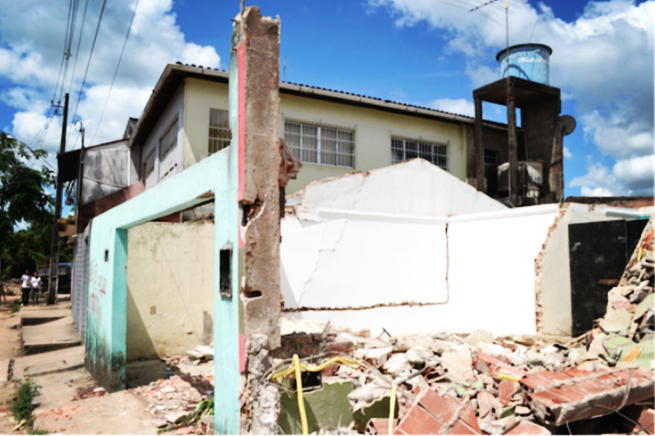BRICS CITIES
This compendium and analysis of Cities in the BRICS countries were developed through a partnership between the South African Cities Network (SACN) and the South African Research Chair in Spatial Analysis and City Planning (SA&CP) at the University of the Witwatersrand. Since South Africa joined BRICS in 2010, multiple connections have been forged between South Africa and its alliance partners. However, although there is a growing volume of engagements, there is still inadequate knowledge and understanding across the BRICS.
Cambios de uso del suelo e impactos sobre el agua subterránea en un barrio al sur de Tandil, Buenos Aires, Argentina
Este trabajo analiza los cambios de uso del suelo en el período 2003-2011 en un barrio de 79,62 ha ubicado al S interserrano de la ciudad de Tandil, y su vinculación con la calidad y disponibilidad de agua subterránea. El mapeo de imágenes satelitales y su contrastación en campo evidenciaron los cambios en los usos del suelo de la zona, pasando de lotes sin uso definido y cultivos a un incremento de aprovechamientos residenciales y turístico-comerciales principalmente.
Remoções forçadas, moradas desmanteladas
O objetivo desta dissertação é compreender os significados atribuídos à moradia pelas famílias do bairro Loteamento São Francisco, no município de Camaragibe –PE, que tiveram suas casas demolidas por causa do grande projeto de investimento associado à realização da Copa do Mundo de 2014.
Energy Sector Experience of Output-Based Aid
Sustainable development goals (SDGs)
placed access to basic services at the center of
international development in 2016-2030. Out of 17 goals,
five address the access of poor people to basic services: to
health in SDG3, to education in SDG4, and SDG5, to water and
sanitation in SDG6, to energy in SDG7, and to urban services
in SDG11. The mutually reinforcing relationship between
electricity access, economic development, and poverty
Country Partnership Framework for the Lebanese Republic for the Period FY17-FY22
This Country Partnership Framework (CPF)
presents the World Bank Group (WBG) program and the
associated results framework for Lebanon for the period
FY17-FY22. In a fragile and conflict-prone environment, this
CPF aims at mitigating the immediate, and potentially
long-lasting impact of the Syria crisis on Lebanon, while
strengthening state institutions, addressing existing
vulnerabilities, and bolstering efforts on longer term
Country Partnership Framework for Uzbekistan for the Period FY16-FY20
This Country Partnership Framework (CPF)
covers the five-year period FY16-20. Anchored in the
government’s medium-term development plan as outlined in a
January 2015 Cabinet of Ministers Program of Action, it also
reflects the analysis and recommendations of the World Bank
Group’s (WBG) 2015 Systematic Country Diagnostic (SCD) for
Uzbekistan and the lessons learned from the Completion
Report of the previous CPS. The CPF’s objectives and
Central America Urbanization Review
Central America is undergoing an
important transition, with urban populations increasingat
accelerated speeds, bringing pressing challenges as well as
opportunities to boost sustained,inclusive and resilient
growth. Today, 59 percent of Central America's
population lives in urban areas, but it is expected that
within the next generation 7 out of 10 people will live in
cities, equivalent to adding 700,000 new urban residents
Keys to Successful Land Administration
The World Bank has funded land reform, land administration, and land management projects in the Europe and Central Asia (ECA) region since the early 1990s. The region comprises the 15 countries of the former Soviet Union, the former socialist countries of Central and Eastern Europe, and Turkey. Both the privatization of land and property assets and their efficient management and mobilization in the credit markets have been at the center of the transitional reforms to date.
On the Central Role of Small Farms in African Rural Development Strategies
Improving the productivity of
smallholder farms in Sub-Saharan Africa offers the best
chance to reduce poverty among this generation of rural
poor, by building on the limited resources farming
households already possess. It is also the best and shortest
path to meet rising food needs. Using examples from
farmers' maize and rice fields, and comparisons with
Asia, this paper examines why the set of technologies
Roads and Rural Development in Sub-Saharan Africa
This paper assesses the relation between
access to markets and cultivated land in Sub-Saharan Africa.
Making use of a geo-referenced panel over three decades
(1970-2005) during which the road network was significantly
improved, the analysis finds a modest but significant
positive association between increased market accessibility
and local cropland expansion. It also finds that cropland
expansion, in turn, is associated with a small but
The Nexus of Financial Inclusion and Financial Stability
Policy makers and regulators have
devoted much effort to reforms aimed at improving financial
stability in response to lessons from the 2007-09 crisis. At
the same time, much effort has also been directed to
promoting greater financial inclusion as an enabler of equal
opportunity. To some extent, these endeavors have been
exerted in silos, neglecting the possibility that financial
inclusion and financial stability could be significantly





